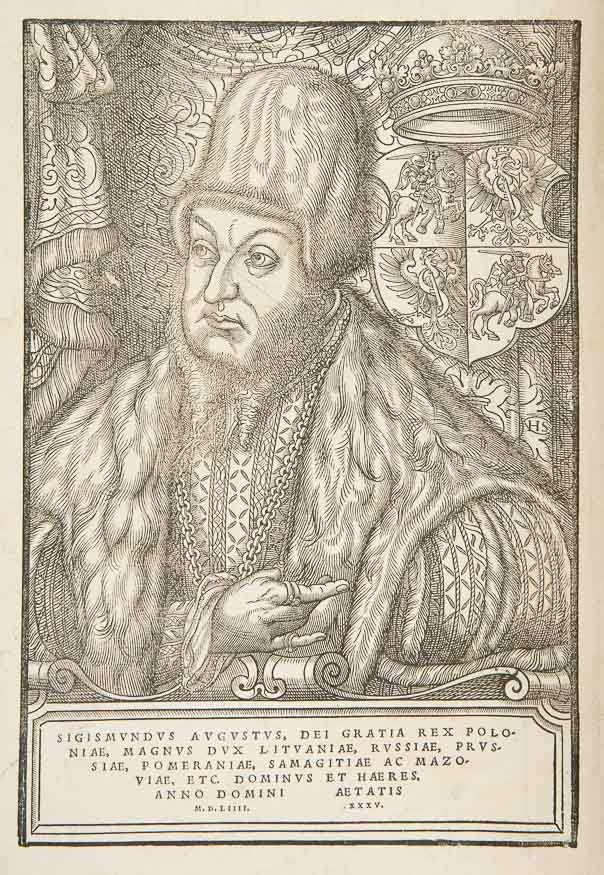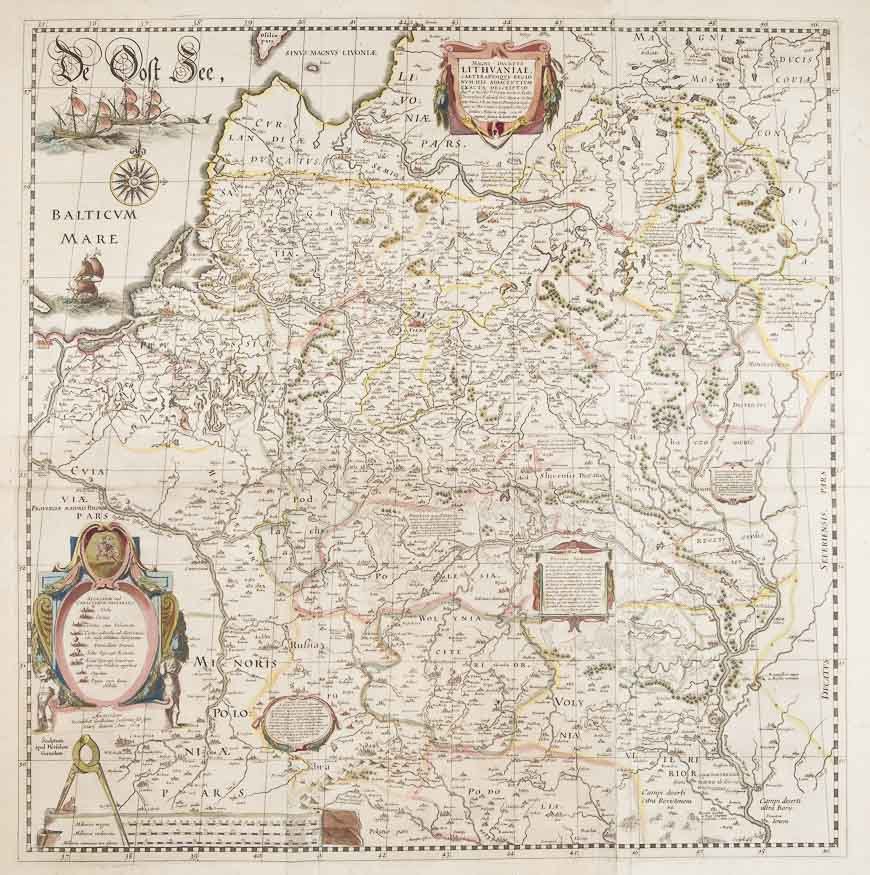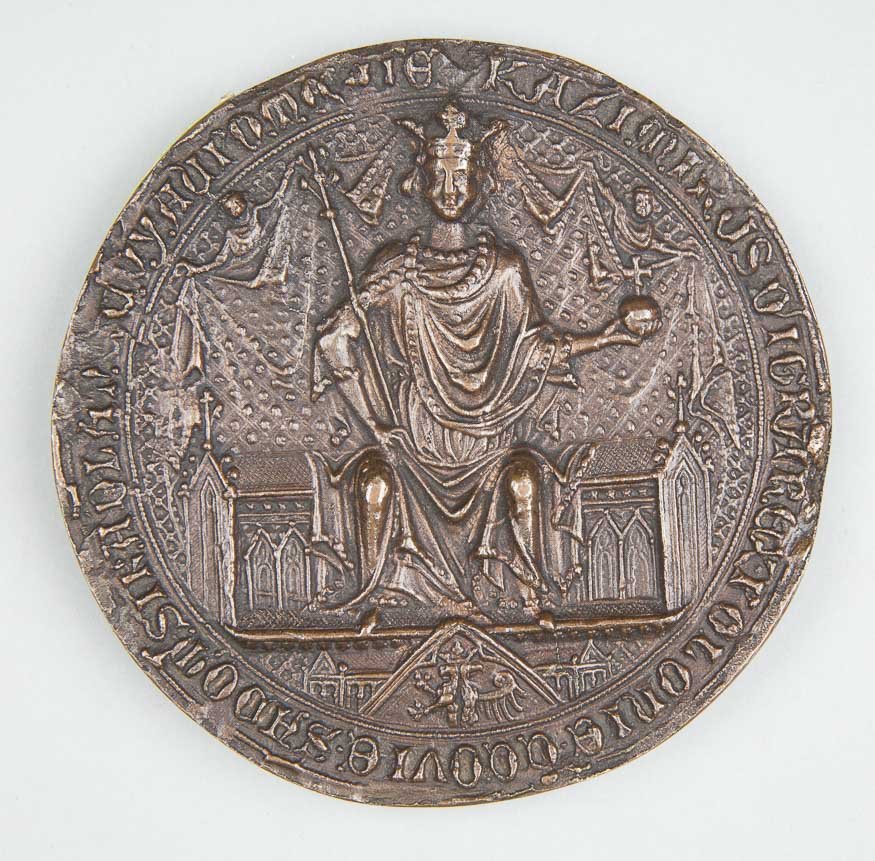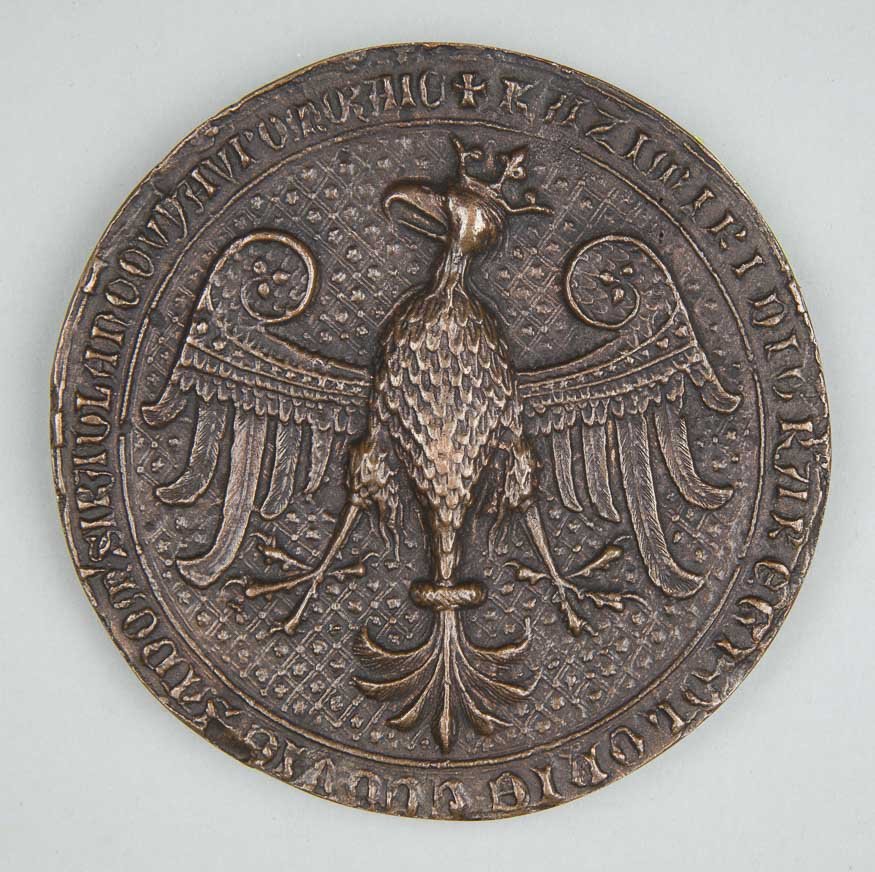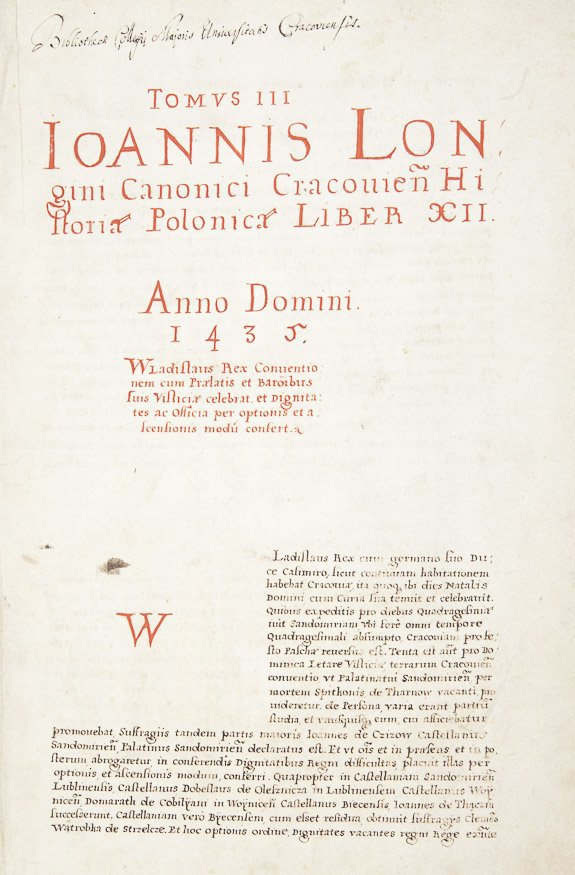
'Monuments of Polish History. Chronicles and Historiography in Old Prints from the Collection of the National Museum in Krakow'.
The National Museum in Krakow would like to invite the public to another fascinating exhibition – a journey through the history of Poland, in which the most valuable and beautiful old prints: old Polish chronicles, galleries of portraits of rulers, armorials and maps will act as guides.
The exhibition has been arranged in the beautiful interior of the Emeryk Hutten-Czapski Museum – a Branch of the National Museum in Krakow at ul. Piłsudskiego 12, on the 900th anniversary of writing the first Polish chronicle, the 600th anniversary of Jan Długosz’s birth and the 150th anniversary of publishing the first volume in the series Monumenta Poloniae historica (Monuments of Polish History), a critical collective edition of the oldest sources on the history of our country. The Museum will show a few dozen unique books, historic maps, medals and royal stamps.
“A 16th-century copy of the third volume of Długosz’s chronicle, made for Bishop Hieronim Rozdrażewski, is one of the most interesting exhibits. It is at the same time the only manuscript that has been put on display,” says Agnieszka Perzanowska, Manager of the Department of Old Prints, Manuscripts and Cartography of the National Museum in Krakow and the exhibition curator. In the 18th century, when the edition of Jan Długosz’s Annales seu cronicae incliti Regni Poloniae [Annals or Chronicles of the Glorious Kingdom of Poland] was produced, all the volumes, including this one, were probably borrowed from the Library of the Collegium Maius, where it had been given after Bishop Rozrażewski’s death. However, it never returned to its owners. It was only a hundred years later that Count Emeryk Hutten-Czapski acquired this book to add it to his collection.
The history of another copy of The Annals by Długosz, shown at the exhibition at the Emeryk Hutten-Czapski Museum, is no less interesting. It is the first edition of the most famous Polish chronicle that appeared in print (in 1615); however, King Sigismund III Vasa ordered to stop printing at the year 1240. It was not until the 18th century that Poles could see the whole of Jan Długosz’s book in print. This edition (Leipzig 1711–1712) can also be seen at the exhibition.
Długosz’s chronicle is accompanied here by a few dozen other old prints, published from the 16th to the late 18th century. They include, among others, chronicles by Maciej of Miechów, Marcin Kromer, Marcin and Joachim Bielskis and Historia Narodu Polskiego by Adam Naruszewicz. Visitors will have a chance to see the armorials of Polish noble families, compiled by Bartosz Paprocki, Wacław Potocki, Szymon Okolski and Kasper Niesiecki. Worthy of note is also Monumenta Sarmatarum, inscriptions from around two thousand graves of Poles who died before the mid-17th century, published by Szymon Starowolski.
In a separate room on show there are over 20 historic maps, published from the turn of the 15th and 16th centuries to the 18th century. They include the so-called Ptolemy maps, based on the description contained in Ptolemy’s book from the 2nd century, with additional information concerning Polish lands, the great cartographer did not have knowledge about. This part of the exhibition ends with an atlas of history from the first half of the 18th century containing, as well as maps, the encyclopaedic history of the whole world.
Apart from old prints and maps on display there are also medals struck on the 400th anniversary of Jan Długosz’s death in 1880. To celebrate this event the Academy of Learning (AU) organised a huge historical convention in Krakow. One of the important points on the programme was transferring the historian’s ashes to a sarcophagus in the Crypt of the Distinguished in the Church on the Rock. Special medals designed on that occasion, now in the collection of the Numismatic Cabinet of the National Museum in Krakow, can also be admired at this exhibition.
Other interesting exhibits include galvanic casts of the seals of Polish kings – from Casimir the Great to Stanisław August Poniatowski – dating from the turn of the 19th and 20th centuries. Objects on display are described in the catalogue Dziejów polskich pomniki. Kroniki i dziejopisarstwo w starodrukach z kolekcji Muzeum Narodowego w Krakowie [Monuments of Polish History. Chronicles and Historiography in Old Prints from the Collection of the National Museum in Krakow], produced by Agnieszka Perzanowska.
Exhibitions of precious old prints and maps from the collection of the National Museum in Krakow – containing some 36,000 volumes – are held in the Czapski palace and the museum pavilion, in the former library of Emeryk Hutten-Czapski. This numismatist and collector of historical memorabilia and artworks and the author of a catalogue of Polish coins and medals was also the founder of the museum. Exhibitions are accompanied by a book series for connoisseurs entitled Biblioteczka Muzeum im. Emeryka Hutten-Czapskiego: Starodruki i kartografia [Book Collection of the Emeryk Hutten Czapski Museum: Old Prints and Maps].
The Hutten-Czapski Museum
ul. Piłsudskiego 12, 31-109 Kraków first floor- Monday: closed
- tue : 10.00-18.00
- wednesday-sunday: 10.00-16.00
